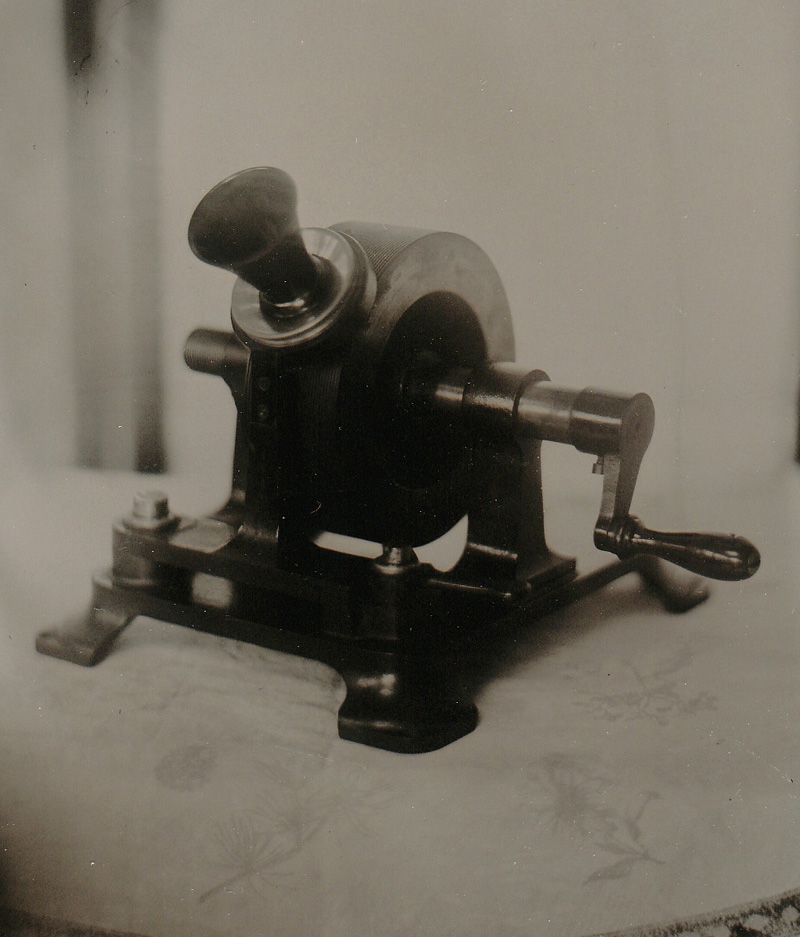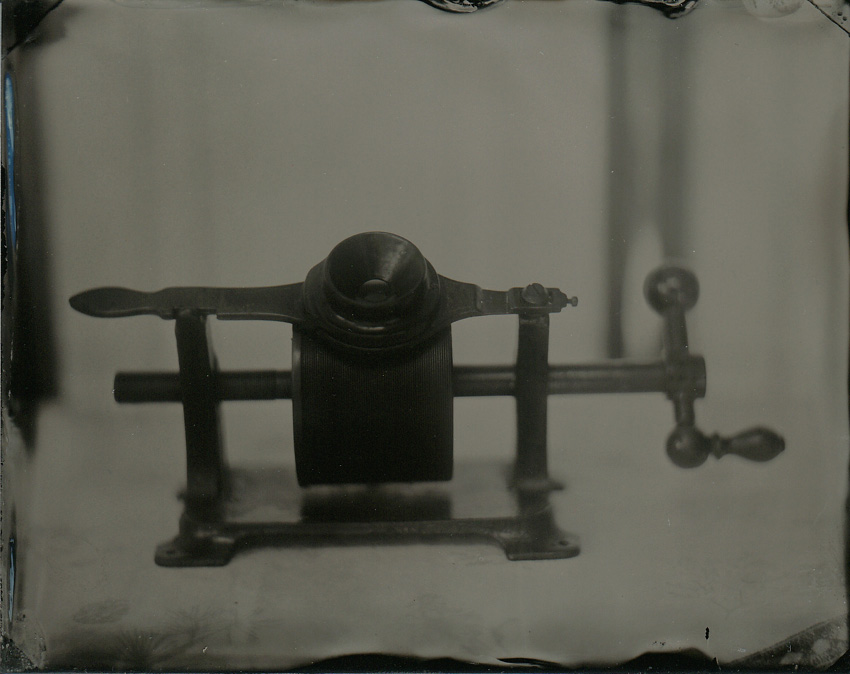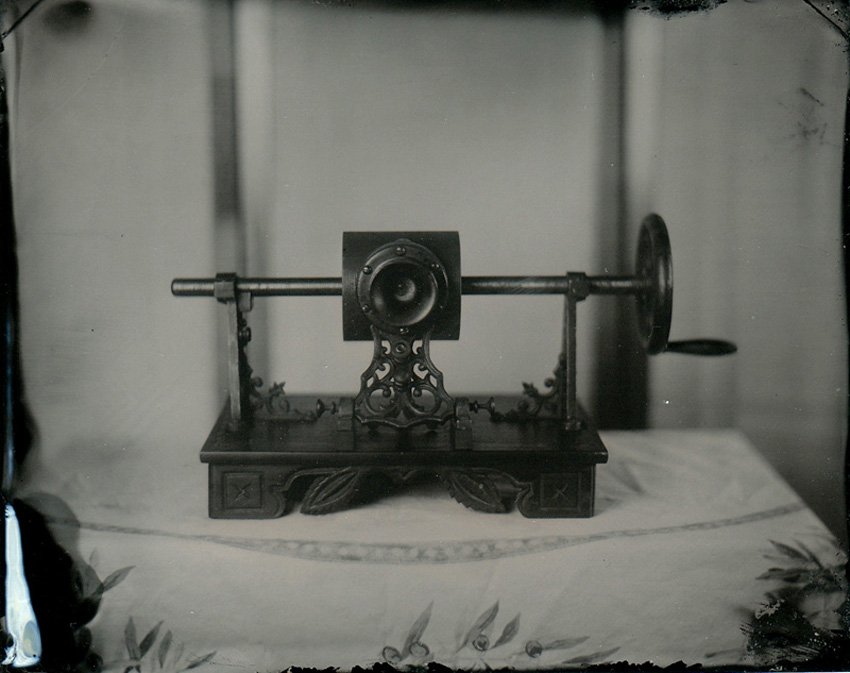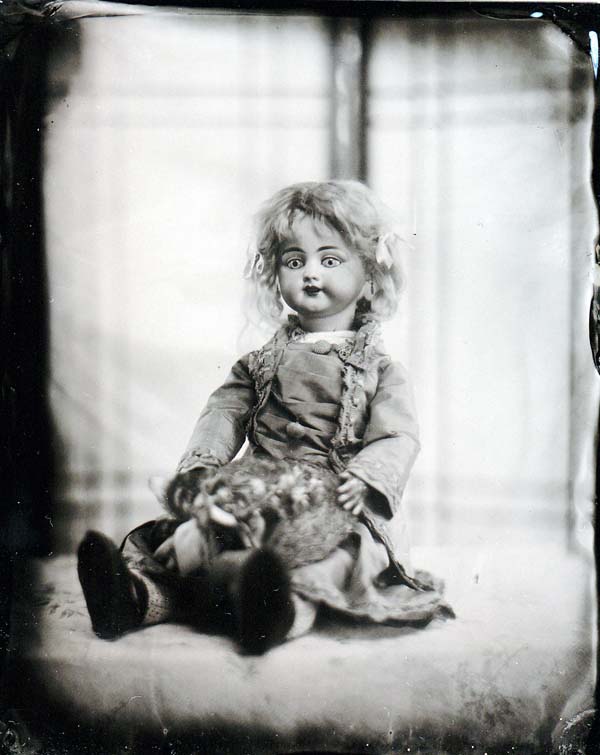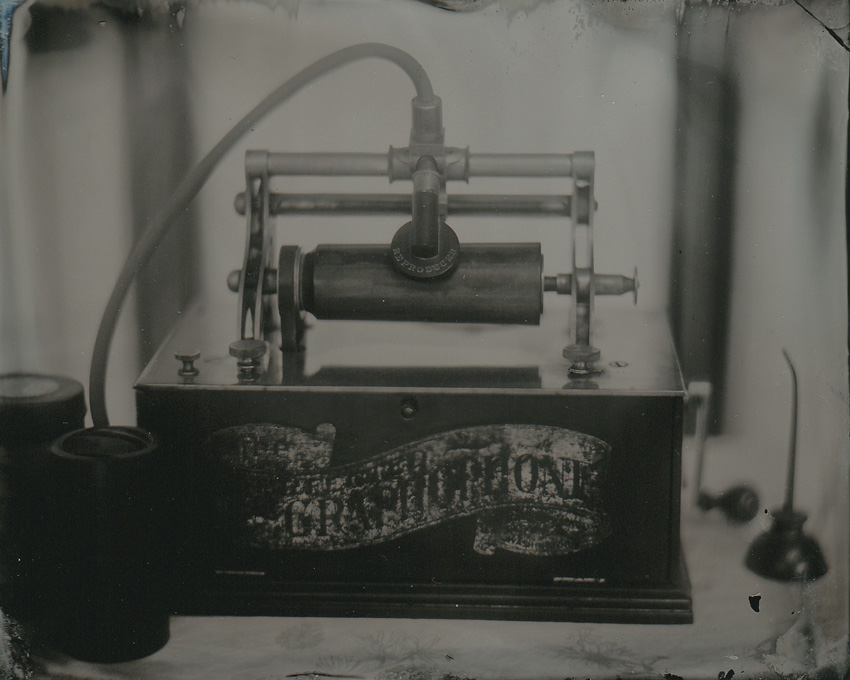
One of my interests is photography of the 19th century. I am active in wet
plate collodion photography, a process which was invented in 1851 and came to dominate
the art of photography from the 1860s to the 1890s. It is a far cry from the convenience
of prepared film, which dominated the 20th century, or digital today. Basically the
process requires cutting a metal or glass plate and pouring a solution made of collodion
(nitrated cotton), ether, alcohol, and bromide and iodide salts evenly over the surface.
Once it gels, in 15 seconds or so, it is immediately plunged into an upright 'bath'
of silver nitrate to become sensitized. After 3 to 4 minutes it is removed from the
silver bath, loaded in a plate holder, and taken to the previously focused camera
to make an exposure. There were no shutters in wet plate cameras, the exposure (typically
averaging about 3-6 seconds) is made by removing the lens cap. Once the picture has
been made the plate is immediately taken back to the darkroom for processing. (The
entire operation must be done in 10-15 minutes or the plate will dry out and be unusable.)
In the darkroom it is developed with a ferrous sulfate solution, then washed and
plunged into a fixer bath of cyanide or sodium thiosulphate to chemically remove
the unexposed silver crystals. This is the most interesting part of the process to
watch as the image very quickly changes from a negative to a positive.
Tintypes
(made on a metal plate) or ambrotypes (on glass) are one of a kind images. There
is no negative involved and additional copies cannot be made. Because there is no
grain (as in film) or pixels (in digital photograph) the details of the image are
often incredibly sharp.

To make tintypes and ambrotypes I use a superb replica camera made by Star
Camera Company, who specializes in cameras for modern daguerreotypists and ambrotypists.
It is based on an 1870s tailboard design made by E. and H.T. Anthony in the 1870s
and is made of heavy mahogany. Interchangeable lens boards allow me to use different
lenses for different purposes. The picture on the left above shows the camera fitted
with an original ca. 1870 Petzval lens. This early type of lens has very short focal
length, giving very sharp focus in the center, quickly fading off towards the edges
and leading to a swirling pattern called 'Bokeh' if the subject is not close to the
lens. For landscape shots, which need sharp focus out to the edges, I use an 1880s
'rapid rectilinear' lens. The picture above right shows the camera fitted with a
matched pair of original 1870s Darlot stereo lenses to make stereoview images.
Tintypes
and ambrotypes are always mirror images since they are direct positives, with the
image reflected onto the front of the plate in the camera. For the sake of clarity
I have flipped the images below to show them in conventional orientation. That is
the only alteration I have made in the scans here. I have not enhanced or modified
them. They show the flaws inherent to the wet plate process, notably the ragged edges.
Originally hese were always matted out with a metal or paper mat, highlighting only
the center of the image. Personally, I enjoy the flaws because they are so characteristic
of the hand-made photographs of the 1800s.
For additional information about
the phonographs shown in the tintypes below, click on the identifying name below
the picture to go to my webpage for that specific machine.
